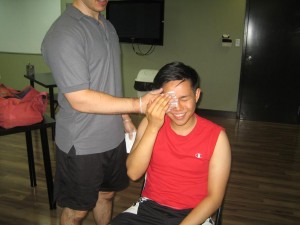A stye is a red bump which forms on the outer edge of the eyelid. The eyelids have plenty of small oil glands around the eyelashes. Dead skin, accumulation of oil and dirt can block these tiny holes. Bacteria can grow inside and result to the development of a stye.
What are the risk factors?
- People with acne, seborrheic dermatitis and rosacea
- Conditions such as seborrhea, blepharitis and diabetes
- High levels of blood lipids
Apply a warm compress on the affected area for at least 10-15 minutes at 2-3 times every day to increase the circulation in the area and for fast rupture and drainage of the stye. - High levels of stress
Symptoms
- Increased production of tears
- Swelling and pain in the affected area
- A crust forms around the eyelid
- Soreness and itchiness of the area
Treating a stye
- Apply a warm compress on the affected area for at least 10-15 minutes at 2-3 times every day to increase the circulation in the area and for fast rupture and drainage of the stye. Soak a clean small towel in hot water and wring out the excess water before applying. Another alternative is using a hot water bottle. Wrap the hot water bottle using a towel before placing on the area. Warm tea bags can also be placed on the affected eyelids for at least 5-10. Use a separate tea bag for each affected eye.
- Avoid squeezing or puncturing the stye to prevent further damage and worsen the condition.
- Clean the eyelids using mild soap and water. Use a mild baby shampoo and mix with warm water. Dip a cotton swab or a clean wash cloth in the and gently wipe the eyelids. Repeat this procedure every day until the stye is totally gone. Clean the eyelids regularly to prevent the development of stye in the future. Another alternative is using saline solution when cleaning the eyelids. Saline solution is a mixture of sterile salt and water which eliminates any bacterial membranes and promotes drainage.
- Take the prescribed over-the-counter pain medications such as ibuprofen and naproxen to lessen the pain and inflammation due to stye.
- Avoid wearing makeup to prevent further irritation on the eye and delay the healing of the condition. Bacteria can be transferred to the makeup and tools and spread the infection to the other eye. Wash reusable brushes regularly and throw away any eye makeup that is more than 3 months.
- Avoid wearing contact lenses while the stye is in the healing process.
- Wash hands regularly using antibacterial soap and hot water before and after touching the eyes to prevent further irritation.
- Massage the affected area gently using clean hands to promote drainage. Once drained, keep the area clean and avoid touching the eye.
- Apply the prescribed over-the-counter antibiotic ointment for the eye. Pull the lid of the affected eye and apply the ointment inside the eyelid.

